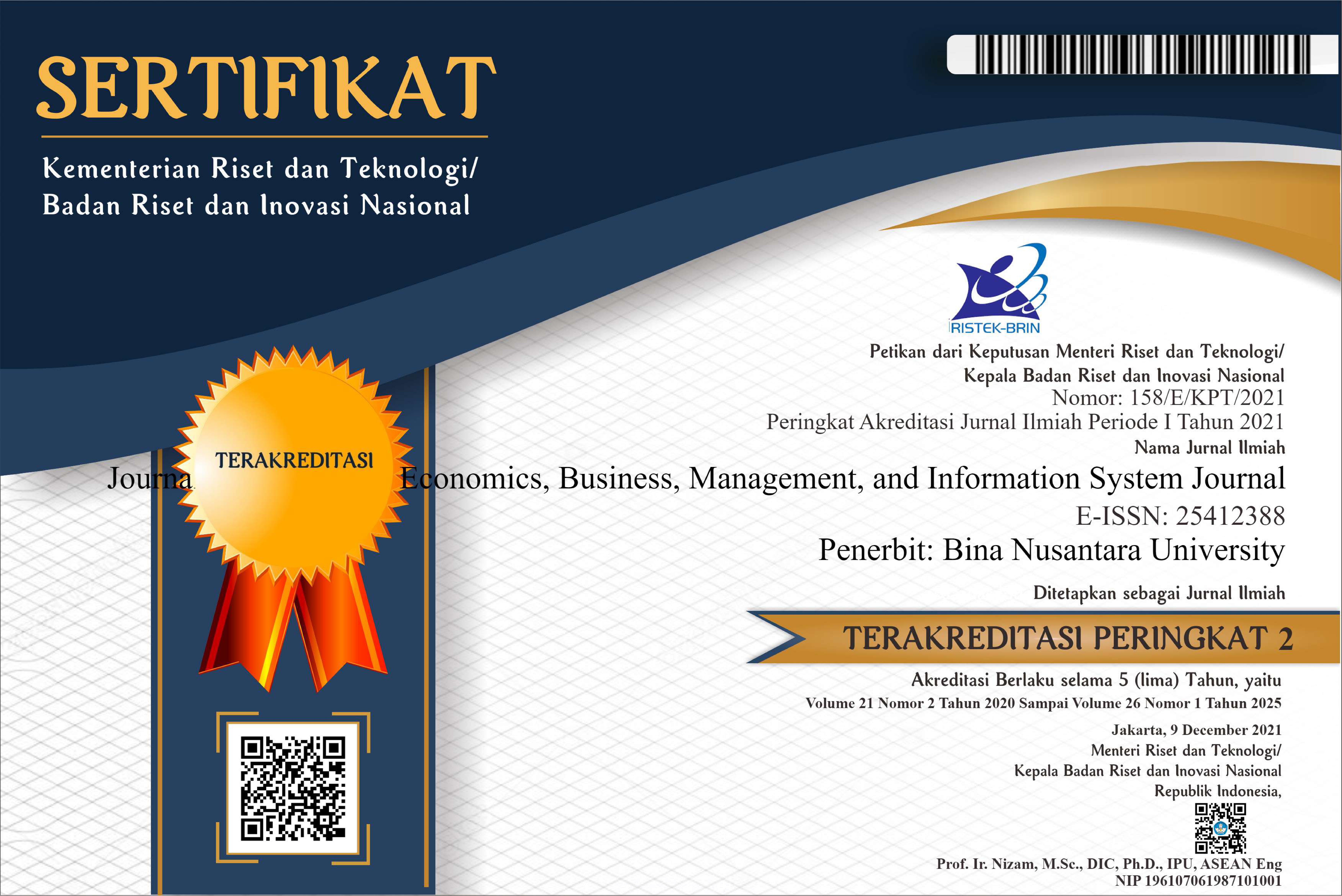Marketing Communication Strategy Through Social Media To Increase Children Book Sales
DOI:
https://doi.org/10.21512/tw.v17i2.1975Keywords:
marketing communication strategy, social media, Facebook, Twitter, children's books, publishersAbstract
The purpose of this research was to determine the marketing communication strategy of children's books through social media in increasing sales. Qualitative research methods with the interpretive paradigm and the phenomenological approach were used in this research. The focus of this research was to observe about the children's books marketing communication strategy using social media, for instance with Facebook and Twitter to attract consumer’s interest in order to increase children's books sales. The results of this study show that the children's book marketing communication strategies in publisher’s social media are fully and interactively utilized, as seen from the various activities posted on Facebook and Twitter. As well as the positive response from consumers who show their interest and desire to buy books offered or follow the event being held in order to increase sales.
Plum Analytics
References
Agus, H. (2013). Komunikasi Pemasaran. Jakarta: Erlangga.
Arifin, A. (2006). Ilmu Komunikasi Sebuah Pengantar Ringkas (1st ed.). Jakarta: Rajawali Pers.
Belch, G. E., & Belch, M. A. (2011). Advertising and Promotion: An Integrated Marketing Communications Perspective (9th ed.). McGraw-Hill Education.
Brison, N. T., Byon, K. K., & Baker, T. A. (2016). To tweet or not to tweet: The effects of social media endorsements on unfamiliar sport brands and athlete endorsers. Innovation: Management, Policy & Practice, 18(3). https://doi.org/10.1080/14479338.2016.1237304
Bruner, G. C., & Pomazal, R. J. (1988). Problem Recognition: The Crucial First Stage of The Consumer Decision Process. Journal of Consumer Marketing, 5(1), 53–63. https://doi.org/10.1108/eb008219.
Cangara, H. (2012). Pengantar Ilmu Komunikasi (2nd ed.). Jakarta: PT. Raja Grafindo Persada (Rajawali Perss).
Cheung, C. M. K., & Lee, M. K. O. (2012). What drives consumers to spread electronic word of mouth in online consumer-opinion platforms. Decision Support Systems, 53(1), 218–225. https://doi.org/http://dx.doi.org/10.1016/j.dss.2012.01.015.
Hassan, S., Zaleha, S., Nadzim, A., & Shiratuddin, N. (2015). Strategic Use of Social Media for Small Business Based on the AIDA Model. Procedia - Social and Behavioral Sciences, 172, 262–269. https://doi.org/10.1016/j.sbspro.2015.01.363
Hutter, K., Hautz, J., Dennhardt, S., & Füller, J. (2013). The impact of user interactions in social media on brand awareness and purchase intention: The case of MINI on Facebook. Journal of Product & Brand Management, 22(5/6), 342–351. https://doi.org/10.1108/jpbm-05-2013-0299
Kartajaya, H. (2010). Konsep Pemasaran. Jakarta: Erlangga.
Kotler, P. (2007). Prinsip-Prinsip Pemasaran (Edisi Ketiga, Jilid 1). Jakarta: Penerbit Erlangga.
Kotler, P., & Keller, K. L. (2009). Manajemen Pemasaran (13th ed.). Jakarta: Erlangga.
Moleong, L. J. (2014). Metodologi Penelitian Kualitatif. Bandung: Remaja Rosda.
Neti, S. (2011). Social media and its role in marketing. International Journal of Enterprise Computing and Business Systems, 1, 1–15. https://doi.org/10.4172/2151-6219.1000203.
Rowley, J. (1998). Promotion and marketing communications in the information marketplace. Library
Review, 47(8), 383–387. https://doi.org/10.1108/00242539810239543.
Shimp, T. A. (2003). Periklanan Promosi (5th ed.). Jakarta: Erlangga.
Silalahi, U. (2009). Metode Penelitian Sosial. Bandung: Refika Aditama.
Widjaja, A. (2000). Ilmu komunikasi: pengantar studi (1st ed.). Jakarta: Rineka Cipta.
Downloads
Published
Issue
Section
License
Authors who publish with this journal agree to the following terms:
a. Authors retain copyright and grant the journal right of first publication with the work simultaneously licensed under a Creative Commons Attribution License - Share Alike that allows others to share the work with an acknowledgment of the work's authorship and initial publication in this journal.
b. Authors are able to enter into separate, additional contractual arrangements for the non-exclusive distribution of the journal's published version of the work (e.g., post it to an institutional repository or publish it in a book), with an acknowledgment of its initial publication in this journal.
c. Authors are permitted and encouraged to post their work online (e.g., in institutional repositories or on their website) prior to and during the submission process, as it can lead to productive exchanges, as well as earlier and greater citation of published work.
USER RIGHTS
All articles published Open Access will be immediately and permanently free for everyone to read and download. We are continuously working with our author communities to select the best choice of license options, currently being defined for this journal as follows: Creative Commons Attribution-Share Alike (CC BY-SA)

















